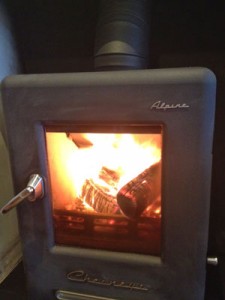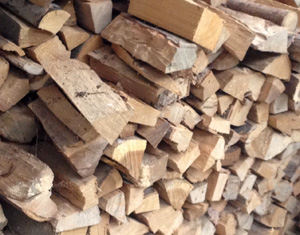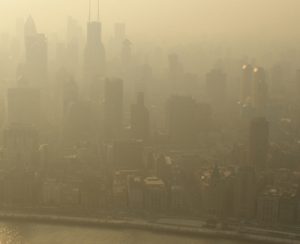Solid fuels and wood burning stoves,

During the last decade, a market has developed for wood burning stoves. and sales have soared to 200,000 a year. Wood burning stoves are marketed as ‘eco friendly’, ‘low emission’ and as offering ‘savings on fuel costs’. Indeed, not only has the woodlands blog written about the pros and cons of different woods in stoves, but Angus has written enthusiastically about the installation of his wood burning stove (it keeps the house warm and reduces carbon emissions).
However, some are beginning to question the wisdom of installing wood stoves. The market for wood fuel has grown in parallel with the installation of these stoves. To meet the demand for wood fuel, even some areas of natural woodland have been felled. For example, mature oaks from Ryton Wood near Coventry were felled to provide fuel for log burning. Indeed, more wood from British woodland is being burnt now than at any time since the industrial revolution.
Old hardwood trees are significant carbon sinks and take hundreds of years to be replaced. Such trees offer a variety of niches (for plants and animals) and promote biodiversity.
Apart from the felling of trees to feed the wood stoves, a New Scientist article focused on the contribution that such stoves can make to air pollution. Burning wood in a grate or a stove may seem benign but wood smoke contains many of the the chemicals also seen in cigarette smoke, AND soot. Wood burning in the home can release chemicals and particulates into the immediate environment , and the surrounding area. Wood burning results in pollutants passing directly from the grate / wood stove to the indoor air. This can result in a high level of indoor air pollution (with ultra-fine soot particles) during seasonal periods, when people spend much more time indoors and the ventilation is limited. The soot from wood burning is also a problem as it warms the atmosphere whilst it is there; if it lands on snow it helps to melt it (by absorbing heat), exposing dark land - which again absorbs more heat (albedo effect).
The great smog of 1952 was the result of the burning of coal; the smoke (soot and sulphur dioxide) formed mixed with other pollutants from industrial processes, vehicles etc. The smog formed a thick layer over London that lasted for days. The Clean Air Acts of the 1950’s did much to improve air quality through the introduction of smokeless zones and the banning of certain fuels.
The indoor use of solid fuels (wood, coal, dung etc.) in poor countries results in high levels of air pollution. In 2004, indoor air pollution from solid fuels was held responsible for almost 2 million annual deaths and 2.7% of the global burden of disease. This makes the use of solid fuels in the ‘home' the second biggest environmental contributor to ill health, behind unsafe water and sanitation.
 The very high air pollution levels that London endured in late January, 2017 generated headlines here and abroad. A significant percentage of the pollution measured in these recent London peaks came from wood burning and it has been estimated that some 10% of the winter pollution comes from wood burning (New Scientist 4/2/2017). The Danish Ecological Council has measured pollution in Copenhagen and has produced some interesting statistics on the levels of particulates in the streets and homes. On January 22, 2017, the concentration of the tiny sooty particles (PM2.5) hit 197 micrograms per cubic metre of air in some parts of London; that was higher than that recorded in Beijing on the same day. The WHO (World Health Organisation) guidelines for air quality state that cities should not exceed a daily average of 25mcg/m3 PM2.5. (Current air pollution levels in London can be accessed here).
The very high air pollution levels that London endured in late January, 2017 generated headlines here and abroad. A significant percentage of the pollution measured in these recent London peaks came from wood burning and it has been estimated that some 10% of the winter pollution comes from wood burning (New Scientist 4/2/2017). The Danish Ecological Council has measured pollution in Copenhagen and has produced some interesting statistics on the levels of particulates in the streets and homes. On January 22, 2017, the concentration of the tiny sooty particles (PM2.5) hit 197 micrograms per cubic metre of air in some parts of London; that was higher than that recorded in Beijing on the same day. The WHO (World Health Organisation) guidelines for air quality state that cities should not exceed a daily average of 25mcg/m3 PM2.5. (Current air pollution levels in London can be accessed here).
If wood is to be burnt in a stove or grate, it is important that
The wood should not be painted. Painted wood can release highly toxic compounds - like arsenic.
The wood should not be too wet or too dry - as this minimises the pollution produced. Wetter or drier and the pollutants released may increase, see links below*
the stove is properly installed so that there is a good draught / air flow, allowing the wood to burn at a suitably hot temperature
General advice on wood fuel and wood burning can be found here:
- https://www.forestry.gov.uk/pdf/eng-woodfuel-woodasfuelguide.pdf/$FILE/eng-woodfuel-woodasfuelguide.pdf
- https://woodsure.co.uk/ready-burn-update/
- http://www.stoveindustryalliance.com/the-importance-of-using-dry-wood/
- http://www.camsweep.co.uk/fuel/wood-coal/
- https://www.london.gov.uk/what-we-do/environment/pollution-and-air-quality/guidance-wood-burning-stoves-london
- see also snippet from article in New Scientist (February, 2017) "Where there's smoke"
[Image : bottom left from a photo by Alex Gindin on Unsplash]
Comments are closed for this post.
Discussion
Cannot comment about moisture meters (don’t have a wood stove), but Angus has a meter from Galleon Fireplaces and he got it online from Amazon at circa £13. see here
In answer to source see :New Scientist snippet
Hi Lewis,
I don’t think you cite the source for your message that wood should be no drier than 20% moisture content. I’d be interested to see that research. In the links you gave I could find only these statements:
Woodsure: ” “The Ready to Burn certification mark is available to wood log suppliers who can demonstrate to Woodsure their ready to burn logs have a moisture content consistently below 20%. The scheme is open to wood log and briquette suppliers who we are expecting to supply ready to burn fuel typically between 8% and 20% moisture.”
SIA: “The SIA recommends that only logs with a moisture content below 20% should be used in a stove.”
london.gov.uk: “… Usually wood that has been kiln dried or seasoned to have a lower moisture content will be much less polluting, as much as 50 per cent less pollution than emitted from burning fresh logs. Drier wood is also more efficient, producing more heat per log.”
Master sweeps: “You will find a lot of conflicting information about the moisture content of wood for burning but anything less than 20% is good and less than15% even better.”
Do you recommend a particular wood moisture content meter?
Ant

Wood burners and pollution
http://www.bbc.co.uk/news/science-environment-44203396
Bruce
22 May, 2018